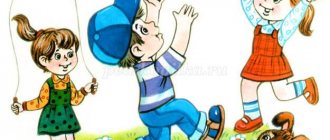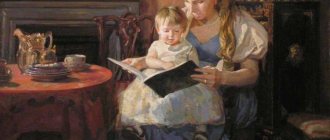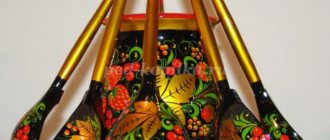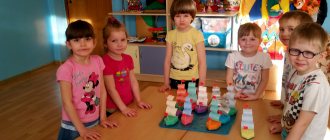Relevance of the project.
In the context of humanization and democratization of society, the problem of tolerance is very relevant, since today the values and principles necessary for common survival and development come to the fore:
- ethics and strategy of nonviolence;
- the idea of tolerance towards foreign and alien positions, values, cultures;
- the need to search for dialogue and mutual understanding, mutually acceptable compromises.
This is due to social problems in society, conflicts on national and religious grounds, which are a direct threat to the security of the country. In Siberia, where people of different nationalities and religious beliefs live, the problem of external and internal migration of the population occupies a special place. Emerging relationship problems can be resolved only by cultivating a tolerant consciousness. Today, hostility, anger, and aggressiveness are becoming increasingly widespread among children and adolescents. There are many reasons for this behavior in children. First of all, it is worth noting the decline in the general level of culture, the mass of negative and often simply aggressive information that falls on the immature psyche of a child from the TV screen or through a computer, social indifference and lack of attention from adults.
The State Concept of Preschool Education states: “In preschool childhood, a child acquires the foundations of personal culture, its basis, corresponding to universal human spiritual values... The formation of the basis of personal culture means that the child is introduced to general, non-transient human values, and not to what can appear valuable to a certain circle of people in a certain region and at certain points in time, joins the universal (universal) means of human life.”
In preschool age, children develop skills of respectful and friendly behavior during relationships with representatives of different cultures, the ability to perceive the environment as the result of cooperation between people of different nationalities and different ethnic origins. They have a positive effect on a person, transform him, elevate him, and return him to a more harmonious state.
The period of preschool childhood is very important for the development of a child’s personality: throughout the entire preschool period, mental functions intensively develop, complex types of activities are formed, and the foundations of cognitive abilities are laid.
Kindergarten, being the first stage in the formation of interpersonal relationships, can and should pay special attention to the problem of tolerance, since it is in childhood that the foundations of human behavior in society are laid. But for this it is necessary to carry out systematic work with all participants in the pedagogical process, create a developmental and learning environment in groups, increase the level of self-awareness and tolerance among educators, preschool specialists, and parents of students.
The diagnostics of parents and kindergarten staff showed a low level of awareness of the problem of tolerance and a low level of national self-awareness. Social problems do not allow parents to pay enough attention to their children - the formation of their worldview. Therefore, one of the main tasks of a kindergarten is to develop in children self-awareness and a tolerant attitude towards the world around them.
Pedagogical ideas for teaching tolerance are contained in the works of many teachers of the past and present. Philosophers, teachers, and scientists interpret the concept of “tolerance” differently, and based on this, the principles of education are determined.
The formation of the foundations of tolerance in preschool children, despite the study of this issue by many famous teachers and scientists, has a number of problems and contradictions. The social order of modern society is focused on a free, independent person who knows how to build relationships with other people and respects their rights and freedoms. However, there are few structured and tested programs and methods for teaching tolerance in preschool age. The possibilities of preschool childhood have been well studied in terms of developing the child’s cognitive and creative abilities, but at the same time, the potential of joint cultural and leisure activities, which could become one of the forms of work to educate a tolerant personality, is not sufficiently used. The family's need for accessible technologies and methods of raising children with a focus on family values and national traditions is not satisfied.
The need to resolve the identified problems in the preschool education system determined the choice of the project topic: “Formation of tolerance in children of senior preschool age.”
Objective of the project:
Creating conditions for the formation in children of senior preschool age of a tolerant attitude towards the world around them.
Project objectives for children:
- Formation in children of senior preschool age the ability to see and understand another person, to show empathy and sympathy for people.
- Formation of tolerant behavior, internal and external legal culture in children.
- Improving the culture of interpersonal interaction among children in the group.
- Strengthening moral ideas and skills of socially acceptable behavior.
Tasks for teachers and parents:
- familiarizing the teaching staff with the latest in methodological literature covering the issues of developing tolerant behavior and communication in children
- increasing the competence of parents on legal issues
- equipping a subject-development environment in groups and in preschool educational institutions that meets the principles of cultural conformity and individuality;
- the use of pedagogical technologies focused on the development of tolerance in working with children;
- interaction between teachers and parents of children in promoting tolerance.
Type of project: creative and research, intergroup, medium duration.
Participants: kindergarten teachers and specialists, parents, children.
Project implementation period: November 2012 – March 2013.
Stage I: Preparatory.
| Develop a work plan for the NDOU on the formation of tolerance for the 2012-2013 academic year | Art. teacher Bowser E.V. |
| Think over and prepare a system of events for Tolerance Week | Creative Group |
| Purchase of educational games, toys, visual demonstration materials, paintings by world artists | Head of the nursery school Dmitrienko T.A. Art. teacher Bowser E.V. |
| Creation of a card index of outdoor games of the peoples of the world | Physical education instructor Ovchinnikova A.V. |
| Familiarization of the teaching staff with the latest in methodological literature covering the issues of developing tolerant behavior and communication in children | Art. teacher Bowser E.V. Teacher-psychologist Kuzminykh E.S. |
| Equipping a subject-development environment in groups and in preschool educational institutions that meets the principles of cultural conformity and individuality | Art. teacher Bowser E.V. Group teachers |
| Reflection of issues and problems of education of tolerance in children in issues of a kindergarten newspaper. | Art. teacher Bowser E.V. Kindergarten teachers |
| Involving parents in the educational process, preparing school-wide and group events on the topic of tolerance. | Head of the nursery school Dmitrienko T.A. Art. teacher Bowser E.V. Group teachers |
| Increasing the competence of parents on legal issues, studying the social status of families of pupils | Teacher-psychologist Kuzminykh E.S. Group teachers |
| Organizing a meeting with Father Vladimir, minister of the Alexander Nevsky Church | Head of the nursery school Dmitrienko T.A. |
II : Project implementation.
Development of a work plan for non-government preschool educational institutions to form the foundations of tolerance in children of senior preschool age.
Development and implementation of Tolerance Week events
from 12 to 16 November
Reading fairy tales of the peoples of the world during the week.
November 12 release of leaflets for parents “Recommendations for parents on tolerant upbringing of children”
Wall newspaper "November 16 - World Tolerance Day"
(responsible: educators)
November 13 “Kids Help Day” - making souvenirs and crafts for children of the first and second junior groups (middle, senior, preparatory groups; responsible: teachers)
November 14 campaign (senior, preparatory group; responsible: educational psychologist)
November 15 Sports festival “Games of different nations”
(responsible: physical education instructor)
Exhibition of children's drawings "My Friends"
(senior and preparatory groups; responsible: educators)
Photo exhibition “We and our little brothers”
(junior, middle groups; responsible: educators).
November 16 Performance “Fly-Tsokotukha” for children of all ages.
Joint holding of events on tolerant mutual understanding with tea drinking “We are different, but we are friendly” (children and parents; in groups;
responsible: educators).
Summary of NOD in the preparatory group “In the Land of Tolerance”
Summary of educational activities in the preparatory group
“In the Country of Tolerance”, educational area “Socialization”
Prepared by:
Kochetkova E.V.
Group:
preparatory
Program content: Purpose.
Continue to reinforce the idea that planet Earth is a home for all people to love.
Objectives:
To consolidate the idea of the individual characteristics of other people (children). To promote tolerance, respect and tolerance for people regardless of race, language, gender. Objectives: Continue the formation of communication abilities in children through the use of information and communication technologies (ICT) Strengthen the understanding of the individual characteristics of other people (children). To promote respect and tolerance for people regardless of their nationality, language, or religion.
Materials:
Screen, projector, flower with petals (with written words), proverbs, ball, stereo system
Progress of joint activities:
The teacher and the children enter the hall, the children stand in a circle and say the words I am your friend and you are my friend.
Let's hold hands together and smile at each other! (Hold hands and look at each other with a smile). Educator: The guys came to visit us today. Let's smile at the guests, say hello and get down to business. The teacher and children say the words: - Good afternoon! - We told you, - Good afternoon! -You said. How two strings were connected - Warmth and kindness. After the greeting, the children and teacher sit on chairs and the first slide with the poem appears. 1. SLIDE Ya. Akim There is one planet - a garden In this cold space Only here the forests are noisy, calling migrating birds. Only on it alone do lilies of the valley bloom in the green grass, and only here do dragonflies look into the river in surprise. Take care of your planet - After all, there is no other like it! Educator:
-What kind of planet is this that is mentioned in the poem?
Children's answers
. (The poem talks about our planet Earth).
Educator:
-Guys, who can see our planet in all its glory?
Children's answers
: -Cosmonauts.
Educator
: -Can you and I see our planet?
Children's answers. Educator
: -You and I can look at the model of the Earth.
Educator
: -Who can tell what it’s called?
Children's answers (The model of the earth is called a globe) (showing the globe) Educator
: - What can you see on it?
Children's answers: (you can see seas and oceans, continents on it) Educator
: -Who inhabits our planet?
Children's answers (people, animals, plants, etc.) Educator
: - Guys!
Today we will go on a journey through the “Land of Tolerance” Educator
- Tolerance.
What it is? Children's answers (good, kind attitude towards all people) Slide with a poem.
Tolerance.
What's happened? If anyone asks me, I will answer - this is everything earthly, That on which the entire planet stands. Tolerance is people of light, of different nations, faiths and destinies, discovering something, somewhere, rejoicing together. No need. Fear that you will be offended by People of the color of blood that is not yours, Fear that you will be humiliated by People in your native land. After all, our dear planet Loves all of us, white and colored. We will live, respecting each other, Tolerance is a word for the living. Educator
: - You know guys, so that people always remember these words and do good deeds, in many countries around the world the International Day of Tolerance is celebrated on November 16th.
Educator
: - I ask the girls to stand up.
Educator
: - Now please stand up, boys.
Educator
: - Please, guys, who has dark hair, and now who has blond hair, please stand up?
Educator
: - Think and say: “What are we all like?”
Children's answers (we are all different) Educator
: - Why are people different?
- How are we different? (shape of face, nose, cheeks, skin color, eyes, hair) Educator
: -Why are people from different countries so different from each other?
Children's answers (People live in different parts of the world). Educator
: -Do you know why this is so?
Let's look at the world map, did you answer correctly (Children look at pictures of people of different races on the slides) Q: - We are all different, but we are together, and we are all equal. Educator
: - Now let's remember the good qualities that you know in each other.
Let's stand in a circle and, passing the ball, we will name these qualities. Game “Compliments”
Q: - What do you think it means to be Tolerant?
Expected answers from children (to be kind, good) Educator
: - Guys, I brought you a flower of tolerance, but along the way it crumbled.
Can you help me assemble it? Game “Flower of Tolerance”
Petals with words are distributed (compassion, mercy, forgiveness, respect for human dignity, acceptance of others, kindness, anger, rudeness, fighting, cooperation, respect for the rights of others)
Educator
: - Look what words are written on the petals What petals are like you Do you think they suit our flower of tolerance?
Children choose those petals that match the flower. Educator
: - What do these words have in common?
Children's answers (these are good words) I attach the middle on which the word tolerance is written. Educator
: - And why don’t the remaining petals fit?
Children's answers. (These words are about bad deeds) Educator
: -Today we will go on a journey on a magic train.
Traveling through the Land of Tolerance, we will relax, play, and most importantly, learn to give people joy, be friendly, and attentive. The train signal sounds (children imitate the movement of the train). Educator
: - And there’s a city ahead. And to find out what it is called, you need to guess the riddle. Often you make it for people, and they make it for you. You have it in your soul, but you can’t find it anywhere. (Welcome)
Educator
:- So, what is the name of our first city?
(Dobro) And in the city of Dobro the first test awaits us, and if we are friendly and help each other, then we will cope with them. Educator
: - The main theme of fairy tales was and remains the struggle between good and evil.
I will name the fairy-tale hero, and you will answer what he is like. If you are kind, you clap your hands joyfully, and if you are evil, you stomp your feet. Ivan Tsarevich, Koschei the Immortal, Goldfish, Thumbelina, Karabas Barabas, Cinderella, Little Red Riding Hood, Geese-Swans, Merman, Baba Yaga, Morozko, Malvina. Educator
: - Guys, when people come to visit each other, or meet on the street, what do they say? Of course you need to say hello. Every well-mannered person should say hello. I want to tell you and show you how they greet each other in different countries.
Game "World Greetings" (slide show)
Russia – a hug and three kisses alternately on both cheeks.
China - light bow with arms crossed on the chest. France - handshake and kiss on both cheeks or Kiss, touching each other's cheeks alternately and sending one to five kisses into the air India - light bow, palms extended in front of the forehead. Japan - a slight bow, arms and palms extended at the sides Germany - a simple handshake and a look into the eyes. The Eskimo tradition is to rub noses against each other. Arabs - cross their arms over their chest; Samoans - sniff each other. Educator
: - And now, on command, when I say: “Hello,” you all say hello together in the way you like best.
Educator
: - Okay, we passed this test.
A signal sounds (children imitate the movement of a train) on the screen a slide with a train is replaced by a slide of the city of “Wise Men”
Educator:-
You and I found ourselves in the city of the Sages.
I will read the beginning of the proverbs, and you will continue it. •Good deeds make a person beautiful. • Hurry to do good. • Life is given for good deeds. • Good is paid for with good. Educator
: - Well done, you coped with this task!
Educator
: - And now, so that we can rest, we’ll do some physical education for the eyes.
Look at the screen and follow the insects with your eyes . (On the screen there are slides with a physical education lesson)
Well done, our eyes have had a rest, let's hit the road further!
A signal sounds (imitation of a train movement) on the screen, a slide with a train is replaced by a slide of the city “Good Deeds”
Educator
:- Attention city “Good Deeds” Guys, to complete this task you need to split into pairs.
Couples, sit down on the carpet! I will give each pair a picture that shows children committing intolerant (bad) acts. Discuss what the children are doing wrong and decide what to do!” Educator
: - Guys, you have completed this task!
Go ahead. A signal sounds (children imitate the movement of a train) on the screen a slide with a train is replaced by a slide of the city of “Magic Words.”
To
the teacher
: - We have arrived in the city of “Magic Words.”
We need to complete all the tasks in order to move on. Every polite and well-mannered person says words that we call “magic”. Guys, listen to the poem, guess, and tell me what “magic” word should be said. Game “Give me a word”
Even a block of ice will melt from a warm word... (Thank you) An old tree stump will turn green when it hears... (Good afternoon) The boy is polite and developed, he says, when meeting,... (Hello) When we are scolded for pranks, we say:... (Please forgive me) Both in France and Denmark they say goodbye when they say goodbye: ... (Goodbye)
Game “Please” Educator: -
I will give you various tasks, and you will have to complete them only if I The task is to say the word “Please”.
If this word is not there, do not complete the task. All clear? Let's try. Be very careful. Game "Please" • Please stand up. • Raise your right hand. • Please raise your left hand. • Kindly sit down. • Please clap. • Stomp. • Please smile! Educator
: - and we completed this task!
Forward! The song “Blue Car” plays (imitation of the movement of a train); on the screen, the slide of the train is replaced by the slide of the city “Zagadok”. Educator:
- Our journey continues, and we find ourselves in the city of “Riddles”. I will ask you riddles. If the riddle is about kindness and politeness, then in response to it you need to say in unison: “This is me, this is me, these are all my friends!” and clap. If the riddle is about what you can’t do, keep silent and drown. Game “This is me, this is me, these are all my friends!” Who among you, waking up cheerfully, will say good morning firmly? (Answer) Tell me, brothers, which of you forgets to wash your face? How many of you have your bag, books and notebooks in order? How many of you on a cramped tram give up a seat to older people? How many of you are silent like a fish instead of a kind “thank you”? Who wants to be polite and doesn’t offend kids?
A signal sounds (imitation of train movement) and on the screen the slide with the train is replaced by a slide of the “TOLERANCE” square
To
the teacher
: - Well done, guys. Well done. Our journey is coming to an end. It ends in the main square of the Land of Tolerance.
"Multi-colored globe"
If only white flowers bloomed in the field, you and I would soon get tired of admiring them.
If only yellow flowers bloomed in the field, you and I would become bored by such beauty.
It’s good that there are daisies, Roses, asters, cornflowers, Dandelions and porridge, Forget-me-nots and frying!
It’s good that people are different in eye and skin color. How beautiful is the colorful world, the multi-colored globe! A. Shlygin
As a caregiver
:- Guys, what qualities do you think a person living on planet Earth should have?
We don’t know where this person lives, how old he is, what nationality he is. He's just a man. Children's answers (Polite, kind, good, smart, brave, honest To the teacher
: - What can we do so that peace always reigns in our country? Children's answers (Be friends, do not swear, speak polite words) To
the teacher
: - A person is born and lives on earth in order to do good to people. The earth is our common home and it will depend on you and me whether we save this world or not. Let's stand in the circle of tolerance. Now put your right hand on the shoulder of the person on the right - this means that you you have a friend who you can lean on. With your left hand, hug the person on your left - this means that you are ready to support each other. And we will all listen to the song together. The song “Let's be friends” is playing. To
the teacher
. - Thank you everyone! I wish you goodness, sincerity and understanding between each other. Well done!
7
Implementation of the project in educational areas:
Children's Day
(socialization, communication, artistic creativity, cognition, work, safety)
Promotion “Sending Greetings”
(socialization, communication, cognition, artistic creativity, labor)
Sports festival
"Games of different nations"
(physical culture, health, cognition, communication, socialization, safety)
Reading fairy tales of the peoples of the world, works of Russian and foreign writers
(fiction, cognition, socialization, communication)
Exhibition of children's drawings "My Friends"
(artistic creativity, communication)
Photo exhibition “We and our little brothers”
(artistic creativity, socialization, communication, cognition, safety)
Performances “Fly-Tsokotukha”, “Kolobok in a new way”
(socialization, communication, cognition, fiction)
Preparation of the performance
“The New Adventures of Little Red Riding Hood” and the festival of theatrical mini-productions “Theatrical Kaleidoscope”
Conducting workshops for teachers “Issues of developing tolerance in preschool practice”
Working with parents:
Production of folders “Rights and Responsibilities of Adults and Children”, brochures, wall newspapers, memos and recommendations for cultivating a tolerant attitude towards the world around us.
Meeting and conversation with Father Vladimir, a minister of the Alexander Nevsky Church.
Organization of joint activities, tea parties with parents.
III : Presentation of the project.
“My son is a nationalist, what should I do?”
Case from practice. The mother of 13-year-old Dima came for a consultation with a psychologist. Barely holding back tears, she told the following story:
“My husband and I have always tried to raise our son correctly, the way he should. He, of course, knew from childhood that all people in the world are different. We watched cartoons with him and read books about the history of nations.
And then, imagine, I accidentally came across his correspondence on VKontakte (he, as usual, forgot to close his page), and there was such horror... It turned out that my son and two other children were bullying an Azerbaijani boy who joined their class this year. And they call him a chump, and they write all sorts of threats to him...
To say that I was shocked is to say nothing. I told my husband everything, in the evening they gave Dima a beating, and he responded: “So what’s wrong? He really is a fool! Hate him! Let him return to his village, but he has nothing to do here!”
My hands just gave up. Tell me what we did wrong? Why did our son become like this?
Typically, discriminatory attitudes in children start small. With offensive jokes towards a classmate who is unlike others. From disrespect and mockery of other people's traditions and customs. And if parents and teachers do not intervene in the situation in time, the son or daughter may join radical nationalism.
You should sound the alarm if your child:
- He began to move away from family and friends and spends a lot of time alone.
- He often watches videos on the Internet with extremist content or promoting Nazi ideas.
- Drastically changes his clothing style and appearance.
- I began to often talk about political and social topics. Expresses signs of intolerance with cliched, as if pre-prepared phrases.
- Experiences bouts of anger and uncontrollable aggression towards persons of another nationality.
What should parents do:
- Do not harshly condemn the teenager’s behavior; try to find out in a calm, confidential conversation the reason why your son or daughter supports these views. Be prepared for the fact that the situation will not change in one conversation.
- Assess your feelings: “It’s very painful and unpleasant for me that you do this.”
- If possible, limit your child’s interactions with people who have a negative influence on him.
- Seek help from a child psychologist.
The sooner a child realizes that “different, not like me” does not mean “bad,” the less likely it is that in the future he will turn into an aggressor, capable of humiliating and bullying people who are somehow different from him.
Presentation of the project at a meeting of teachers
Conducting a festival of theatrical mini-productions
“Theatrical Kaleidoscope” for children of kindergartens No. 163 “Harmony”, No. 164 “Fairy Tale” of Russian Railways JSC and parents of pupils
Work results:
- Increasing the pedagogical competence of kindergarten teachers and specialists.
- Compiling a card index of outdoor games, sports festival scenarios, and leisure activities with parents.
- Improving the legal and pedagogical culture of parents (moving folders, memos and recommendations for promoting tolerance).
- Development of creative abilities of kindergarten students and teachers, their communication skills.
- Strengthening the cooperative relationship between the kindergarten and the parents of the pupils.
Why is it so important to talk about this with children?
In 2004, an incident that was striking in its cruelty occurred in St. Petersburg. A native of Tajikistan was returning from the skating rink with his 8-year-old daughter and nephew. Suddenly a group of armed teenagers jumped out at them shouting “Russia is for the Russians!” started beating the family. As a result, the man received a closed head injury, his nephew received knife wounds, and the girl could not be saved - she died from loss of blood.
This story is far from isolated. Hatred towards representatives of other nationalities begins almost from kindergarten, when migrant children are mocked not only by children, but also by teachers.
The same atmosphere reigns in schools: Tajik and Uzbek schoolchildren are subject to bullying and violence, especially if they have language problems and difficulties with adaptation.
This is evidenced by data from a sociological study conducted in September 2022 among students of Russian schools. 33.6% of respondents confirmed that they faced humiliation and ridicule from classmates because of their national characteristics.
Our children do not live in a vacuum. They, like sponges, absorb all views, attitudes and moods in society. And they don't become violent on their own. They are driven to this by the indifference of their parents, uncontrolled access to information in the media that traumatizes children’s psyches, and ignorance of cases of bullying at school. According to a 2022 study of students aged 11 to 17, 72% of respondents reported incidents of bullying to teachers and other adults, but the situation was never resolved.
All this awakens aggression and intolerance in children, which can subsequently develop into racism and nationalism.
Therefore, the task of parents is not just to tell their children about the existence of racial, religious and national differences between people, but also to teach them to accept and respect them.
Find out if your child is being bullied by peers or other adults when you are not around! Listen to what is happening around, see where the child is and call in any situation with the “Where are my children” application.






